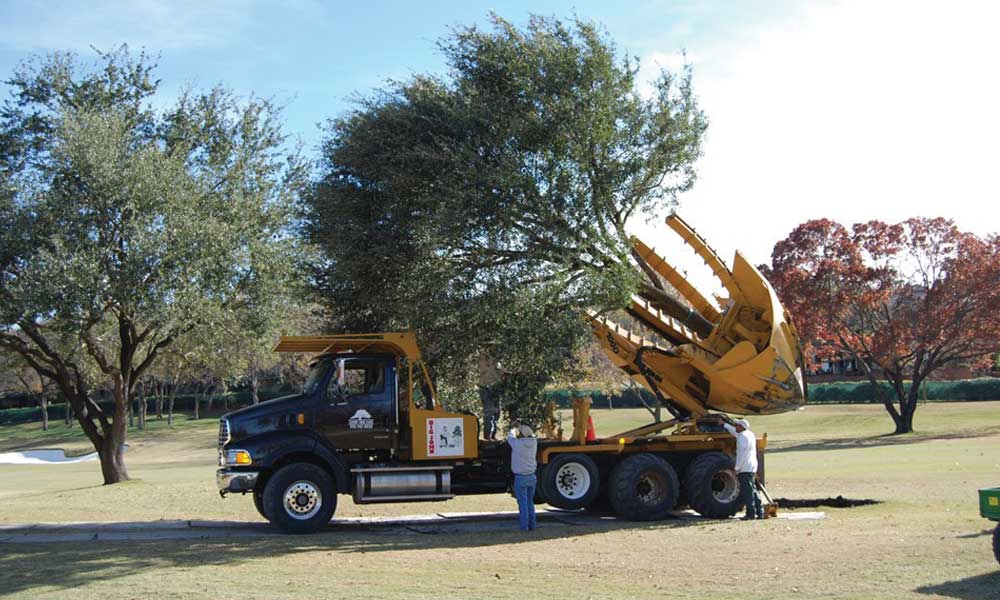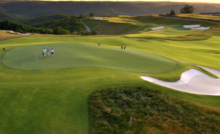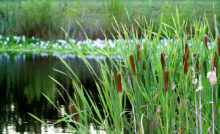Fannin Tree Farm: Taking Care of Trees for Nearly 40 Years


Fannin Tree Farm
Fannin Tree Farm describes its business as the place, “Where Texans buy their trees!” But as you learn more about the outreach and the service of this nearly forty-year-old company, you may decide that this description is a bit too modest. In the Dallas/Ft. Worth area, Fannin Tree Farm is a go-to resource for trees that have been carefully grown, are installed with meticulous attention to detail, and come with a one-year Fannin Guarantee that starts the day the tree is planted.
In 1977, Michael and Cindy Fannin established Fannin Tree Farm. Today, the business is still family-owned and operated and has grown to be the largest tree contractor in the Dallas Metroplex that owns and grows its own inventory.
The Fannin Tree Farm installation crew averages roughly twenty-five years of experience in planting trees. The company’s professionals rely on innovative equipment and a time-tested and perfected process to make installation efficient and to ensure that the trees are installed with the least possible trauma to the tree or disturbance to the surrounding area.
For clients who have handpicked specific trees from the Fannin inventory, the selected trees are hard tagged as soon as they are chosen. Fannin Tree Farm clients can always be sure that the trees being installed on their property are precisely the trees they personally chose when they walked the farm with a Fannin sales associate.
The services of an experienced and caring tree company are beneficial for every park, business, or residential installation of trees. However, no projects gain more from professional guidance than do golf courses, where achieving the successful harmony of trees and turf can be both complicated and costly.
The Unique and Sometimes Complicated Relationship Between Golf Courses and Trees
As golf course superintendents know, trees both enhance and challenge a golf course. The right trees in the right placement make a beautiful course even more appealing. They help define play, provide shade, create buffers and offer habitat to wildlife. Historically, trees have been so important to North American golf courses that the trees often become part of the course’s identity.
At no location are trees are more integrally woven into the course’s story than at Augusta National in Georgia. Coincidentally, built on land that was once a tree nursery, Augusta National is in part defined by its trees, from the canopy of magnolias that line the entry on Magnolia Lane to the centuries-old “Big Oak Tree,” the “Eisenhower Pine,” that stood until 2014, and by the fact that every hole at Augusta is named for a tree or shrub.
Nevertheless, trees and golf courses are not naturally the perfect pairing. Trees can interfere with the growth of turfgrasses, block the sun and compete with turf for water and nutrients. While trees can, in some instances, offer marginal protection from frost, in the long term, winter shade generally reduces soil temperature and increases the potential for cold weather damage to turf.
Tree roots can push to the soil’s surface, thereby damaging cart paths or creating trip hazards in walkways. Falling leaves, needles, fruit, blossoms, and branches can necessitate hours of maintenance work. Overly dense tree canopies can interfere with needed air circulation, and in many cases, golf courses must invest in and maintain a substantial inventory of saws and tree trimming equipment along with mowers designed specifically for use around trees with exposed roots.
Despite all of these challenges, if superintendents want to create controversy among club members, they need only to suggest that certain trees on the golf course be removed. Golfers can be remarkably sentimental about the trees on a course, even trees that create problems for their game. And everyone who appreciates a well-designed golf course pauses to admire the splendor of a hole that is artistically framed by trees.
To achieve and maintain the optimal balance of trees and turf, golf course superintendents benefit from a relationship with a company they trust to guide them in tree selection and placement. Experienced professionals in the industry understand how trees best function in the golf course environment. They know where and when to plant or transplant and can advise on long-term expectations, placement, tree inventory, and management.
$15 Million in New Trees and Transplants in The Golf Course Industry
Brian Jeffries is Director Commercial Sales at Fannin. He joined the company nearly a decade ago and is on a mission to build relationships within the golf industry and better serve the targeted needs of golf course superintendents. Over the years, he has touched nearly every private and public course in Texas by installing new trees or transplanting trees on the course.
Succeeding in his goal to build relationships by understanding the distinctive needs of each individual golf course, Brian has facilitated the planting of over $15 million in new trees and transplants in the golf course industry over the last nine years.
Representing Fannin, Brian works directly with course staff, architects, planning committees, and owners to make sure all of their tree needs are met. His understanding of the game of golf and of treescaping enables him to help place trees in the most desirable locations to better influence golfers to hit in the proper locations.
“Planting or transplanting large trees can produce the look of a beautiful, long-established wooded environment on the course and instantly add unique character and value,” Brian explained. “Large trees are also the perfect solution for screening the clubhouse or blocking an unfortunate view. So if you are looking to enhance course privacy or even relocate that beautiful tree that’s standing just where you want to place your tee box, then I can provide you with the new tree or the transplant service you require.”
Brian added, “I have built a strong name in the transplant industry by moving multiple trees on new course projects and numerous renovation projects with one of the highest success rates in the industry. My ability to work with the best architects has placed our company on the frontlines of the highest-rated golf projects in our region. But at Fannin Tree Farm, we are always working to improve our services and skills. I continue to pursue knowledge to better serve my customers through continued education opportunities and my affiliations with Golf Course Builders Association, Golf Course Superintendents Association, Texas Nursery, and Landscape Association and International Society of Arboriculture.”
As the experts at Fannin Tree Farm pointed out, “Remodeling an existing course or clubhouse or designing and constructing a brand new golf course is a large undertaking in and of itself, but adding tree transplantation to that mix makes it an even more painstaking, expensive endeavor. In times like these, you require a knowledgeable company that pays special attention to the detail.”
A partial list of golf courses or golf and landscape architects that have benefited from the trees and/or services of Fannin Tree Farms includes:
- Bent Tree County Club, Dallas, Texas
- Blessings Golf Course, Fayetteville Arkansas
- Brook Hollow Golf Club, Dallas, Texas
- Colligan Golf Design, Arlington, Texas (Golf Architecture)
- DA Weibring Golf Resource Group, Plano, Texas (Weibring-Wolfard Golf Design)
- Dallas Athletic Club, Mesquite, Texas
- Dallas National Golf Club, Dallas, Texas
- Four Seasons Country Club, Irving, Texas
- Golf Works, Austin, Texas
- Los Colinas Country Club, Irving, Texas
- Medalist Golf, Inc. Cumming, Georgia
- Preston Trail Golf Club, Dallas, Texas
- T.D.I. International, Inc., Stuart, Florida
- Thomas H Pritchett & Associates, Irving, Texas (Landscape Architecture)
- TPC Craig Ranch, McKinney, Texas
- Tripp Davis and Associates, Norman, Oklahoma (Golf Architecture)
- Winstar Golf Course, Thackerville, Oklahoma
To learn more about Fannin Tree Farm and the company’s native Texas trees that can be installed in Texas and in many parts of the South, including Florida and Georgia, visit www.fannintreefarm.com.
Recent Posts
South Carolina State Leaders Honor Green’s Superintendent Career
South Carolina’s House of Representatives today honored the career of golf course superintendent Chuck Green.…
Branson, Missouri: 5 Reasons Why it is a Must-Visit Travel and Golf Destination
Branson, Missouri, is booming as a must-visit destination for golf enthusiasts and travelers alike. Nestled…
Preview more than 1,000 rounds of golf available in GCSAA’s Rounds 4 Research online auction
The Golf Course Superintendents Association of America (GCSAA) Rounds 4 Research program offers golfers the…
EcoBunker Synthetic Revetting More Sustainable than Natural Turf*
*A recent report by the Welsh government has found that EcoBunker synthetically revetted bunkers have…
SiteOne® Hires Dan Carrothers as VP, Agronomic Business Development
SiteOne® Landscape Supply is pleased to announce Dan Carrothers as the new Vice President for…
Superintendents Online Turf Directory – EVERYTHING TURF
Our online directory, directory.GolfCourseTrades.com is the go-to resource for the busy superintendent. It is your opportunity…


